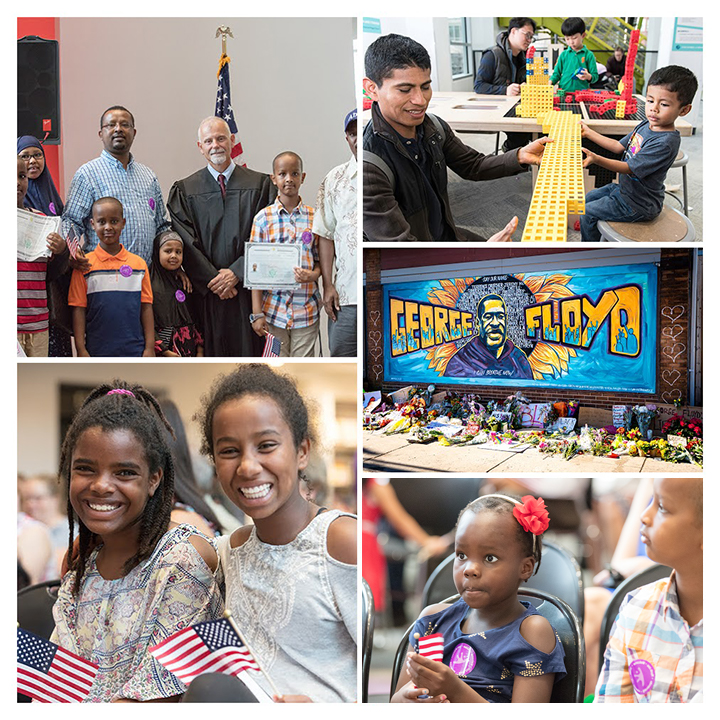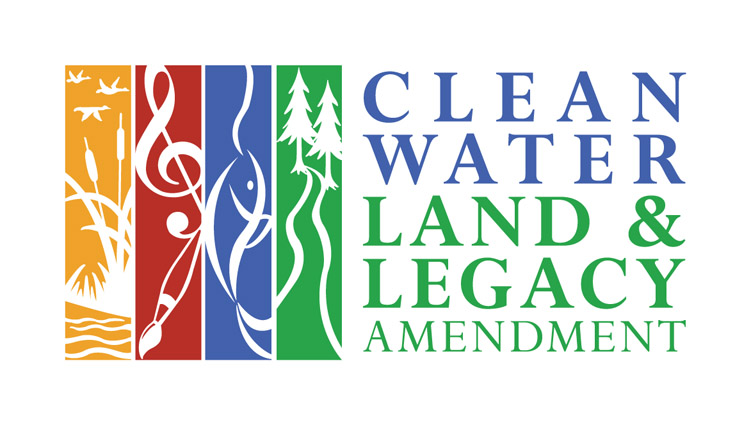
At Minnesota Children’s Museum, we believe that diversity, equity and inclusion are integral to fulfilling our mission of sparking children’s learning through play. As a community resource for thousands of families, we are committed to being a diverse and welcoming place for everyone.
We value diversity: We appreciate all people and embrace the similarities and differences.
We value inclusion: We strive to be welcoming and inclusive in our physical spaces and in everything we do and say.
We value equity: We provide opportunities that help people facing disparities achieve their full potential.

Committed to Organizational Progress
Our Commitment to Diversity, Equity and Inclusion lays out the values that guide our words and actions. This commitment applies to race, ethnicity, socioeconomic status, age, gender identity, sexual orientation, language, religion, mental and physical ability, nation of origin, citizenship status or any other personal aspect that might place someone within a marginalized community.
In addition to doing work that directly impacts our community, we’re committed to making progress within our own organization. The museum is elevating diversity, equity and inclusion across the organization and embedding this work into all department priorities. One focus area is to grow the cultural competance of staff and board. We are doing this by:
• Staff and board completing the Intercultural Development Inventory with associated individual growth plans.
• Staff completing DeepSEE’s FilterShift program, including the training of staff to conduct sessions for incoming employees.
• Inclusive leadership training for senior management.
In addition, the museum created an internal DEI Champions group to assist in advancing policies, practices and strategies to live our commitment to diversity, equity and inclusion. This group’s initial focus is helping ensure the museum creates and maintains an equitable and inclusive workplace.
As we move forward, we will continue to make this work a priority. We are committed to improving retention of BIPOC staff and achieving 30% BIPOC representation on senior leadership (directors and up).


Making Play Accessible for All
Play is powerful and universal, uniting people across cultures, backgrounds and beliefs.
We believe all families deserve the opportunity to experience the joy and learning that happens at Minnesota Children’s Museum.
For families that can’t afford to visit, we offer greatly discounted tickets and memberships through the museum’s All Play program.
We also recognize that extra support can sometimes help kids fully participate. To make that happen, we’ve developed resources to help foster full inclusion at the museum. Read more about those initiatives here.


Recognizing Racial Injustice
We acknowledge that systemic racism and inequities exist in our community. We recognize our responsibility as a community leader to help drive positive change and see that we can have a role in eliminating systemic racism in Minnesota – particularly when it relates to the negative impact it has on childhood development. We feel this way in part because:
• The American Academy of Pediatrics has concluded that race is a social determinant of health. Racism harms the health of children of color.
• Racial inequity negatively affects brain development in young children. It’s hard for kids to thrive when they live in traumatic or repressive racial environments.
We know words are just a start and we are committed to doing the necessary work. We look forward to making our community a better, more welcoming place for everyone.
News & Resources
Our website has become a go-to resource for parents, caregivers and community partners to find content on topics related to play. It’s important that this space also includes resources and discussions on topics related to diversity, equity and inclusion as they relate to kids. Those topics might include the play gap and how it disproportionately impacts children of color, addressing racism as a childhood health issue, resources for raising antiracist and accepting children, tips for addressing diversity at all ages and more.
The more we talk about and bring awareness to these issues and experiences, the more we make strides toward building a better future for children.
Articles
Why We Talk about Racism and Racial Justice
Why does Minnesota Children’s Museum talk about the serious and challenging topics of racism and racial inequities? The museum’s vice president for external relations tackled these questions in the latest issue of Hand to Hand, a newsletter published by the Association of Children’s Museums.
Museum Essays about Racial Justice and DEI
“Front and Center: Minnesota Children’s Museum Talks about Racism”
The organization’s strategic plan calls for us to “champion children’s healthy development.” We know there is no way to meaningfully advocate for the wellbeing of kids without acknowledging and addressing racial inequities that harm children in Minnesota—and everywhere.
Museum President Dianne Krizan explains how Minnesota Children’s Museum is doubling down on its efforts to promote racial equity in light of George Floyd’s murder. By sharing the DEI work Minnesota Children’s Museum is doing, the hope is that other children’s museums will be inspired to increase their efforts to make an impact as well.
Regular Hours
| Sunday | 9:00 a.m. – 4:00 p.m. |
|---|---|
| Tuesday | 9:00 a.m. – 4:00 p.m. |
| Wednesday | 9:00 a.m. – 4:00 p.m. |
| Thursday | 9:00 a.m. – 4:00 p.m. |
| Friday | 9:00 a.m. – 4:00 p.m. |
| Saturday | 9:00 a.m. – 4:00 p.m |
Support the museum with a recurring donation!
The form is not published.
Minnesota Children's Museum
St. Paul, MN 55102
651-225-6000
Fax: 651-225-6006
Contact Us | Privacy Policy
Minnesota Children's Museum
10 West Seventh Street
St. Paul, MN 55102
651-225-6000
Fax: 651-225-6006
Contact Us | Privacy Policy
Support the museum with a recurring donation!
The form is not published.

Funded in part with money from the Arts and Cultural Heritage Fund that was created with the vote of the people of Minnesota on November 4, 2008.
MUSEUM INFORMATION
About Us
Leadership & Board
Annual Report
Employment
Museum News
Media Resources
Member Corner
Calendar of Events
EQUITY and INCLUSION
DEI Commitment ![]()
Income-Based Admissions
Accessibility

